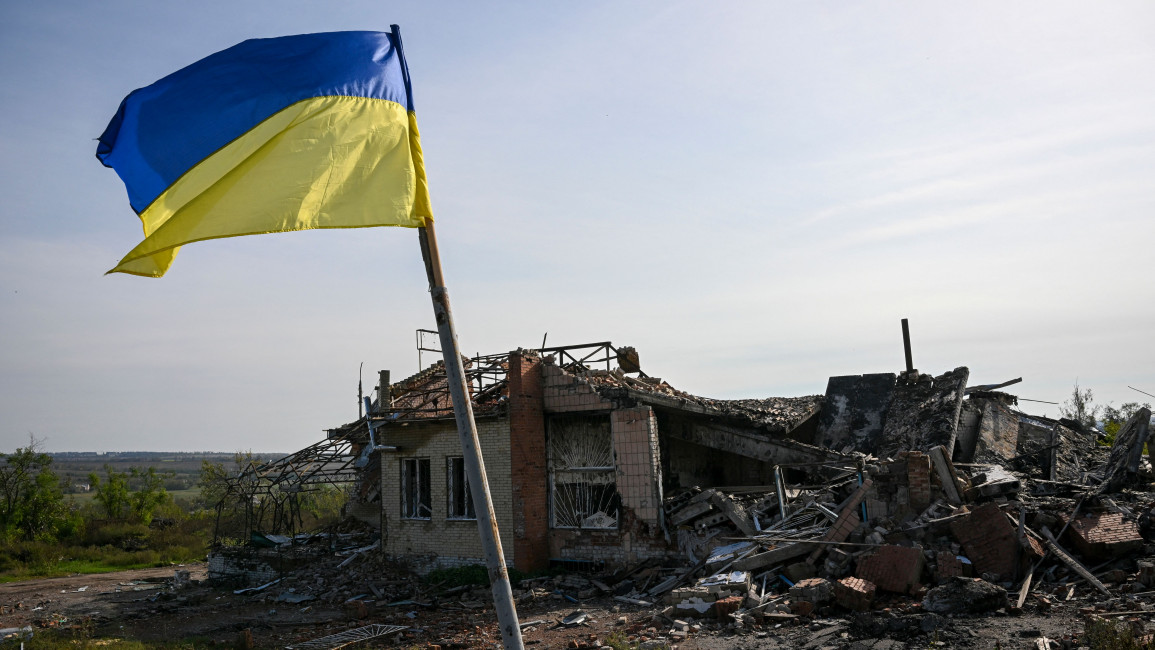
Why is it so difficult to predict an endgame in Ukraine?
Since the Cold War, Western intelligence has built a track record of failing to foresee many of Russia’s moves. It failed to anticipate the invasion of Hungary in 1956 and Czechoslovakia in 1968, then the invasions of Georgia in 2008 and Crimea in 2014, followed a year later by Moscow’s intervention in Syria.
With the massing of Russian troops on the Ukrainian border in late 2021 into early 2022, intelligence services were convinced, despite glaring doubts by several European nations, that Moscow was preparing to invade Ukraine.
This would become one of the very few predictions to come true.
From the moment the Russian tanks rolled into Ukrainian territory, US intelligence told the White House that Russia would conquer Ukraine in a matter of days. The ‘special operation’ would be swift and decisive, Ukraine’s military would be routed, Kyiv would be captured with little resistance, and Zelensky’s government would collapse or flee the country.
Western observers assessed that Russia’s modernisation and restructuring of its armed forces after the campaigns in Georgia, Crimea, and Syria improved Moscow’s preparedness for modern warfare.
"As the drumbeats of war grew louder in the following weeks, the notion of a sweeping Russian victory would become the first war casualty"
The ‘New Look’ was not uniform across the services, with the strategic and aerospace forces faring best and, alongside the navy, generally possessing more modern equipment than the ground forces. But what the ground forces lacked in equipment, it was believed, they made up for with operational experience from Russia’s campaigns in the past fifteen years.
But as the drumbeats of war grew louder in the following weeks, the notion of a sweeping Russian victory would become the first war casualty. Russian troops soon found themselves bogged down in serious logistical and tactical problems, failing to reach Kyiv from the north, and, later, losing control of Kherson with significant losses in personnel and equipment.
The gap between Russia’s ‘expected performance’ and the actual - surprisingly - poor one substantiated a Western narrative that if Ukraine had the necessary support, it could bend the Russian trajectory, if not reverse it.
Within weeks, shipments of Western military support began to flow into Ukraine. The effect of the US-made Javelin and other anti-tank munitions was immediately visible on the battlefield. Artillery ammunition soon followed, then armed vehicles. Precision HIMARS artillery arrived, making it possible to hit Russian command centres behind the frontlines.
After a year of fighting, Russia's invasion of Ukraine has pushed both sides to extremes. As continued NATO intervention and heightened polarisation promise a dangerous escalation with the threat of a global war looming, writes @emadmoussa⬇#UkraineWar https://t.co/HmFFwSUstl
— The New Arab (@The_NewArab) March 4, 2023
At this point, analysts and commentators, particularly in NATO states, began to see the war through the lens of ‘Russian desperation.’ Putin and the Kremlin, they assumed, were increasingly viewing the war in existential terms. A tactical nuclear strike on Ukrainian soil was coming.
The nuclear threat seems notably less eminent today, but it remains higher than it has ever been since the end of the Cold War. Instead, the battlefield turned into a long-winded chain of stalemates: trenching, minimal gains and losses, half defeats, and unfinished victories for both sides.
Ukraine’s recent defeat in Bakhmut has confirmed early concerns that Moscow was preparing a massive Spring offensive. What is now materialising, instead, is a Ukrainian counteroffensive.
The predictions are now divided between those who think Ukraine’s counteroffensive is the final hooray for Kyiv and those who believe it could succeed. If it does swiftly, some argue, this might create further geopolitical complexities that neither Russia nor NATO can contain.
Others speculate that the Kremlin is counting on ‘strategic patience,’ playing the waiting game and being primarily on the defence, until Western support has waned and Ukrainian forces have been depleted, before launching a massive offensive.
All considered, what we have been witnessing in the past 16 months is a highly fluid battlefield with a large multitude of variables playing out simultaneously and interacting rather unpredictably.
One reason is that the Ukraine war has pushed the frontier of modern warfare. No other war in modern times was waged on as many fronts, produced as many sanctions from one block of superpowers against another, triggered worldwide energy and food crises, put the nuclear option vulgarly on the table, shifted and created new alliances, and caused eight million people to flee their homes or be internally displaced.
The war also saw a sharp rise in the influence of non-state actors, primarily multinational corporations. Traditionally, corporate activities in conflict zones have been largely incentivised by profit, with companies seeking either to boost their sales or benefit financially from the war outcome.
"What we have been witnessing in the past 16 months is a highly fluid battlefield with a large multitude of variables playing out simultaneously and interacting rather unpredictably"
In the Russia-Ukraine war, most of these corporations have acted with political motives. This, among other things, has undermined the states’ flexibility and decision-making independence, adding another layer of complexity to wade through.
In addition, this war is deemed by far the most technologically advanced conflict in human history.
Once experimental innovations in artificial intelligence, cyber espionage, neural networks, robotics, and deep learning algorithms are now routinely utilised and improved on the battlefield.
The war has featured more drone technology than any other conflict, with both sides using UAVs for reconnaissance and attacks. And, with new war tools at each party’s disposal, inevitably, the number of variables has significantly increased.
The other reason for unpredictability is the very nature of conflicts.
Social groups can instigate and shape war at the margins, but they never truly control how the next stages unfold. Conflicts are fundamentally multidisciplinary and simultaneously impacted by the range of factors that impact the human condition as a whole, such as psychology, history, and socio-economics.
What strategists and analysts do is hypothesise about the war endgame by measuring the limitations imposed by humanity’s internal and external conditions.
While experts can analyse the military tactics, these factors are typically dynamic and nearly impossible to precisely replicate. Predictions are, at best, an approximation governed by a myriad of changing variables.
Dr Emad Moussa is a Palestinian-British researcher and writer specialising in the political psychology of intergroup and conflict dynamics, focusing on MENA with a special interest in Israel/Palestine. He has a background in human rights and journalism, and is currently a frequent contributor to multiple academic and media outlets, in addition to being a consultant for a US-based think tank.
Follow him on Twitter: @emadmoussa
Have questions or comments? Email us at: editorial-english@newarab.com
Opinions expressed in this article remain those of the author and do not necessarily represent those of The New Arab, its editorial board or staff.




